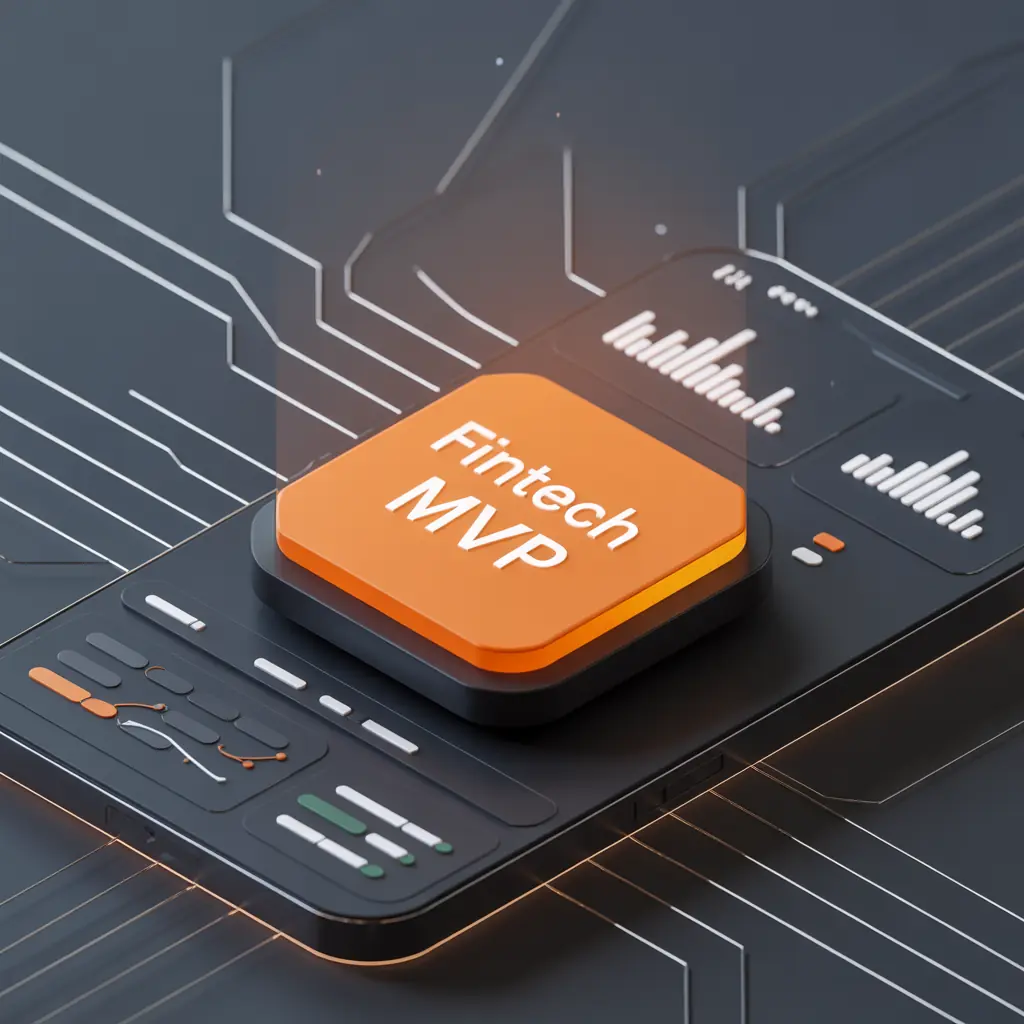From idea to working product. 101 guide for non-technical founders
Startups
04/11/24
Read time: 18 min
Introduction
Launching new software is an exciting avenue. Sure, it’s challenging and even risky: the latest data shows that almost 90% of all startups fail. However, with a great plan and a determination to create a solution that serves a problem, you might become one of the few who do succeed. Did you know that Slack was internally developed for a gaming company? It pivoted into a communication platform when the founders realized their workplace needed to collaborate internally in a much better way. With a good plan and determination in place, Slack grew from its initial challenges into a billion-dollar company used by millions globally. If Slack could do it, what’s stopping you? With a solid plan and relentless determination, your breakthrough could be just around the corner.
Overview of the Software Development Process
Product software development is a process of transforming an idea into a fully functional product. Once the product is done, it is ready to be tested by real users. This process is more than just coding; it’s a proactive collaboration between different experts, such as developers, designers, DevOps engineers, and project managers. What non-technical founders should understand is that communication and project alignment are key. The main thing that will make it work is having clear expectations and frequent feedback loops to keep everyone on the same page.
Another important consideration is to plan for flexibility. No matter how brilliant your idea is — many things will change. Plenty of software development projects will follow an Agile development methodology, which allows iterative development. That means you don’t have to get it absolutely right on day one and can develop in iterations as you go. More than half of all projects change direction after they have started.
Time and budget also remain some of the critical success factors when it comes to building a product. According to the latest data, only 16.2% of all software development projects are completed both on time and within budget. Therefore, setting practical timelines for yourself, investing in the right team, and finding a balance between quality and speed are essential.
It basically comes down to this: software development is not purely a technical process. It’s a strategic one. Your job as a non-technical founder is to make sure the product fits into your business vision while you trust in your development team. And when the bedrock of trust and communication is sound, your tech product is way more likely to sail through.
Importance of Understanding the Journey From Concept to Market
Understanding how to take your dream from product idea to launch saves you from costly mistakes. Especially if you’re a non-technical founder. It also reduces time-to-market and results in products that better fit the marketplace. Without a clear understanding, you’ll build a product without knowing what users want, resulting in failure. Airbnb, for example, had multiple iterations, each of which brought them closer to a design that actually worked for both travelers and hosts. That is, they had to understand deeply how their users interact with the platform.
Having this understanding as a founder also helps you manage resources effectively. You set realistic timelines and communicate your vision to both your team and stakeholders more clearly. Finally, you’ll manage to avoid feature creep, pivot when necessary, and refine your go-to-market strategy. Remember, “measure twice, cut once”—lay the groundwork with care, and you’ll avoid costly mistakes.
Idea Generation and Validation
Now, without further ado, let’s move on to the actual step-by-step process. As a startup founder, you might be asking yourself: Okay, I have a software idea, but where do I start? What do I do at the earliest stages of my journey? Don’t worry, we’ve got your back. Everything starts with product hypothesis and validation.
Techniques for brainstorming and validating software ideas
A stepping stone to brainstorming and software idea validation is striking a balance between creativity and practical validation.
Begin with techniques that encourage a free flow of ideas, like mind mapping or brainwriting. Mind mapping is a way to organize ideas and features visually to show the big picture, while brainwriting allows each to quietly write out their ideas, avoiding groupthink and making sure all inputs are recorded.
Idea validation comes in after you have a list of ideas. Customer interviews and surveys help you collect feedback directly from potential users. Tools such as Google Trends or Keyword Research will help you understand market interest. You can also create an MVP to test the key functionalities before going all in. According to data, 42% of startups fail because there is no market need for the product created.
Last but not least, competitor analysis assists you in identifying existing solutions and ways to differentiate your offering. The key is to ensure your concept closes a gap rather than repeating existing offerings. These methods create a robust foundation for effective software idea generation and validation.
Importance of aligning product concepts with market needs
The most important issue is the alignment of product concepts with market needs. In cases where the market demand exists, it will have more opportunities to gain traction and drive revenue. Indeed, most startups fail because they misjudge the need for their product. As such, building something that nobody wants will not only be a waste of time but will derail whole business strategies.
Key benefits for aligning with market needs include:
- Greater Product Adoption. Users are most likely to interact with a product that directly appeals to their pain points.
- Higher Income. Products with market demand can gross revenues up to 30% more than products without.
- Reduced Risk. It means that by finding product-market fit early, you’ll reduce the risk of expensive pivots later on.
Determining whether your product solves a real-world problem is step one for any successful software launch.
Planning & Design
Now, having a vision of how your product will look from the start is good, but it’s okay to change your mind early on. Just remember: consulting experts and changing your initial vision is fine, as long as you provide value to the end user!
Key stages in planning: scope definition and feature prioritization
The two most important events in the planning of a software project are scope definition and feature prioritization. Defining the scope is outlining the boundaries of what the product will and won’t do. This clarity helps avoid scope creep —additional features sneaking into the project and leading to delays or extra expenses. Once the scope is set, prioritization of features becomes key. You will learn how to do it using techniques such as the MoSCoW framework, which means Must have, Should have, Could have, and Won’t have. It ensures that the features that deliver the most value are built first.
Design considerations, focusing on UI/UX and functional design
The design phase encompasses both the UI/UX design and functional design. UI/UX is all about creating a smooth, intuitive experience for the user; from layout to navigation, everything should be user-centric. Studies have found that 88% of users are less likely to return after a poor UX experience. Plus, functional design ensures that the technical components of the software work together in harmony and support the user journey. This would include how data flows between modules and how features are implemented to meet user needs without complicating the interface. These two come together into one single product: one that looks good but also works well.
Team Composition & Management
People are your greatest asset. This means that careful decisions regarding your team composition need to be made. In most cases, if you don’t have an in-house team or require specialized expertise, hiring a dedicated development team via an outsourcing service provider is a perfect choice.
Strategies for assembling a development team
To turn your software idea into a working product, you have to compose the right development team. Define what key roles you will need: developers, UI/UX designers, project managers, a DevOps engineer for complex projects that need scalability, or QA testers to ensure the reliability of a product. You can combine both in-house talent and remote experts to give you flexibility with control over the project.
Pay great attention to complementary skills. Having a senior developer and one middle-level one will ease knowledge sharing and at the same time will be cheaper. Consider Clutch or Toptal to find proven experts with specific experience in your industry.
Managing remote teams and ensuring effective communication
Managing a remote team requires strategic approaches to keep everybody in line and connected. One unique method is something called “virtual watercoolers“. Encourage informal check-ins where team members can talk about something other than work for a few minutes. This is a perfect way to build rapport and belonging for remote teams that might feel detached. Your team members can discuss anything — from sharing TV shows and funny TikTok video recommendations to important events. This will make them feel a part of a bigger community of people, not just employees.
Another advanced tip is to utilize asynchronous communication tools. Instead of overloading real-time meetings, tools such as Loom or recorded video updates let team members absorb information on their own timelines. They also work across time zones, capturing the personal touch in interaction. This avoids meeting fatigue, too, which often comes along with working remotely.
You can also decrease friction by adopting a time zone overlap strategy. Organize the work hours so that everyone in the team gets at least a couple of hours of each other’s time every day. This will make syncing on critical tasks easier without causing delays.
Finally, consider virtual “pulse checks”. These are quick, anonymous surveys to check the emotional and mental states of the team, where managers get insights on morale and notice issues long in advance. This is proactive work for keeping the team long-term motivated and productive.
Development Phases
The typical phases of the software development lifecycle consist of coding, testing, and deployment. In the coding phase, developers translate your product requirements into functional code. By the way, an experienced team selects code based on scalability and future-proofing. Then, unit, integration, and user acceptance tests ensure the smooth running of the software and adhere to set requirements. The last stage, deployment release, deploys the code in a live environment where real users can start using the product, while post-deployment monitoring catches unforeseen issues.
Agile methodologies are often employed to optimize these stages. Agile emphasizes flexibility and iterative development, allowing teams to adapt to evolving requirements. Agile frameworks, such as Scrum or Kanban, enable regular feedback and continuous improvement. They break down projects into smaller, hence manageable, sprints, usually lasting two weeks. The integration of Agile best practices enhances collaboration among teams, supports responsiveness, and aligns the product to market needs. In fact, 86% of organizations adopt Agile methodologies to better manage their software projects.
Quality Assurance
Software development QA is way more than bug-catching; it’s about instilling the notion of quality into every step of development. By testing in the early stages, the QA team assists developers in delivering stable, user-friendly software. Studies have shown that early integration of QA in the lifecycle can significantly reduce defects post-release, helping resolve issues before they become problems.
To achieve this, QA teams use a host of testing and debugging techniques. Automated testing, for instance, is vital in repetitive tasks, such as regression testing. It makes the follow-up of issues after updates quicker and more effective. Manual testing provides value testing from an end-user perspective and catches bugs that are missed via automated means. Another important approach is that of TDD or test-driven development. It is principally different because tests are developed before writing code. This means that right from the beginning of development, each function will meet expectations. Finally, debugging with tools like Chrome DevTools and Postman helps developers pinpoint and fix issues before problems diffuse to other parts of the product development lifecycle.
Product Launch, Market Entry & Iteration
Final checks before launch like bug testing, problem fixes, and performance optimization will ensure a seamless UX. During this stage, it’s recommended to design a marketing strategy that includes social media promotion, email campaigns, and partnerships. Why is this important? You need to create a buzz about your product and build anticipation. Pre-launch user feedback, beta testing, and soft launches are effective tools in the validation of your product with real users.
With ongoing support after the launch and monitoring of user feedback, the issues will go away in no time and will keep your users engaged. Focus on scaling your software solution as your user base increases by enhancing infrastructure, refining functionality, and growing your team. By following this approach, you will achieve long-term success and manage to adapt to the market demand or changes without any hassle.

Future Trends & Technologies
Adoption of ChatGPT in Programming
The most exciting trend is the rise in the use of ChatGPT for software development, along with other AI models. Developers are starting to adopt the use of AI-driven models for code writing, debugging, and even documentation. ChatGPT features can automate routine activities in coding and conduct complex calculations. AI enhances collaboration, speeds up solutions, and hastens the development cycle.
Low-Code Platforms
Low-code development is revolutionizing how people build software applications. These days non-technical users can create applications with minimum coding. These platforms offer a quick reduction in development times and broaden the circle of people who can actually create software. Low-code development is projected to reach $50 billion in 2028, as driven by business needs for agility and speed in digital transformation.
Progressive Web Applications
PWAs continue their upward trajectory by closing the gap between the web and mobile experiences. The benefits of PWAs include fast loading, offline functionality, and a seamless UX, which is why so many companies try to install this kind of app-like experience without the cost of native development. And with PWAs adopted by big hitters like Twitter and Pinterest, this trend will only gain momentum in the upcoming years.
Blockchain Development
The rise of blockchain redefines the way we look at data security and dApps. Due to this, blockchain technology is gaining momentum in industries such as finance, healthcare, and supply chain management. It has the capability to make transparent and tamper-proof transactions. Smart contracts and dApps will likely continue to proliferate into the foreseeable future, changing how industries handle secure data transactions.
Python Overtaking JavaScript
Although JavaScript has been a traditional choice for web development, Python is catching up fast. This is especially true in recent areas like AI, data science, and automation. The simplicity of Python, along with a huge and growing ecosystem of libraries and frameworks, has made Python modern developers’ sweetheart. In fact, recent developer surveys show Python surpassing JavaScript in popularity for tasks like ML and back-end development.
Conclusion
No matter how complex your software idea might seem, with plenty of initial research and the right people on board, you can transform it into a working product with great UX and high ROI.
Bonus advice: “Measure twice, code once.” Before beginning development, take the time to thoroughly plan, verify, and define the scope of your project. In addition to saving time and money, a strong foundation will help you avoid mistakes that could throw your vision off course.
FAQ
How much time can it take for a software idea to launch?
Depending on the complexity of the project, the size of the team, and the range of features, the period from software conception to launch could range from three to nine months. Smaller MVPs can have shorter timetables, but applications with many integrations or complex features might take longer.
What are the main stages of software development?
Planning, requirements collection, design, development, testing, deployment, and maintenance are the main stages of software development. These stages guarantee that the program satisfies user and business needs by being thoroughly created, tested, and supported upon release.
What are the latest trends in product software development in 2024?
Product software development will involve the use of AI-powered code generation and debugging in 2024, while low-code allows it to be done more rapidly. Other major trends this year are PWAs, blockchain development, and a growing dominance of Python.




